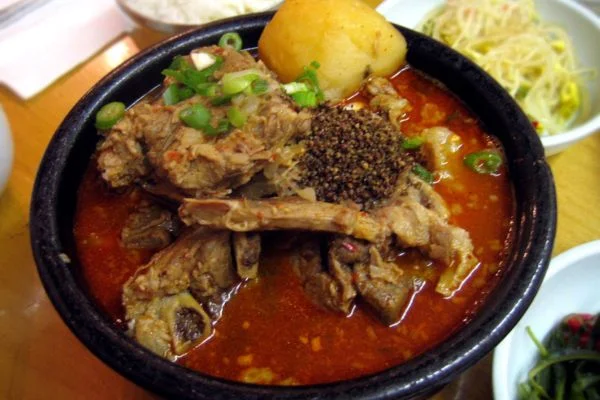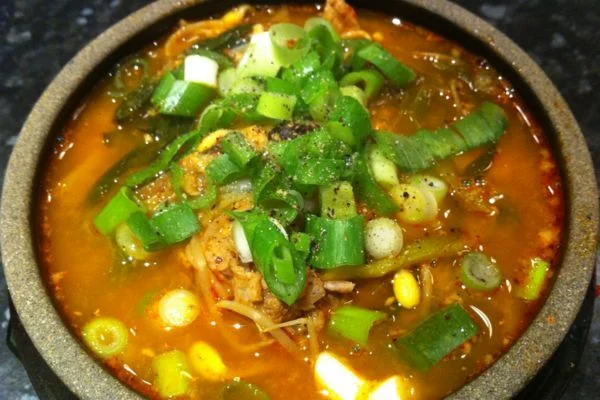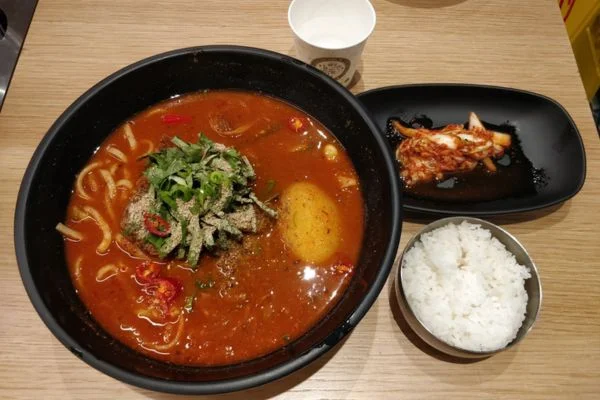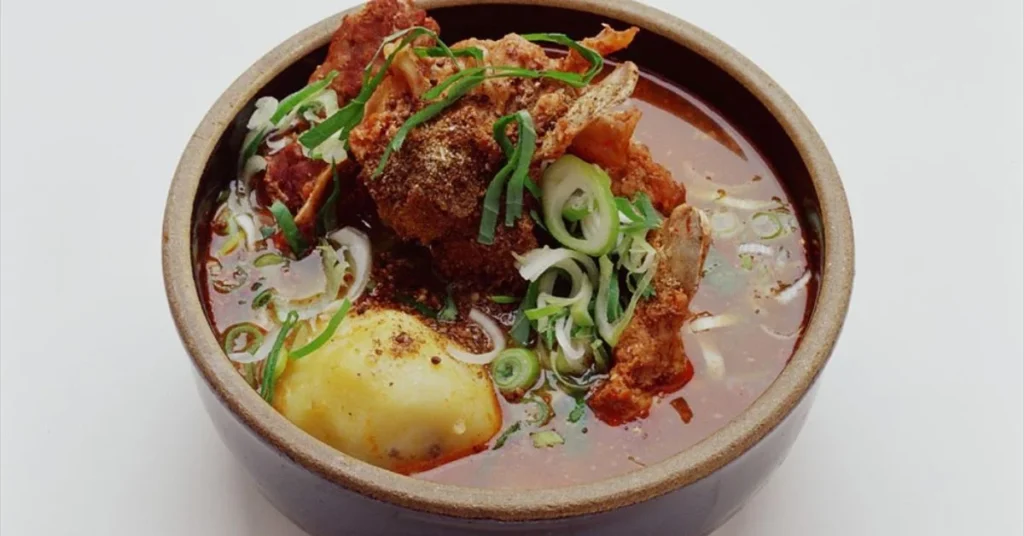Savory World of Korean Pork Bone Soup
Gamjatang, also known as Korean Pork Bone Soup, is a hearty and flavorful dish from Korean cuisine. It simmers pork bones for hours until the meat becomes tender and the broth rich with deep flavours. People love Gamjatang for its robust taste, often savouring it as a comforting meal, especially on chilly days.
The name “Gamjatang” comes from two Korean words: “gamja,” which means potato, and “tang,” which means soup. Traditionally, this soup includes potatoes along with other ingredients like pork spine bones, vegetables such as cabbage and perilla leaves, and seasonings like garlic and red chilli pepper flakes. Combining these ingredients creates a harmonious blend of textures and tastes, making Gamjatang (Pork Bone Soup) a popular choice in Korean cuisine.

Although making Gamjatang requires time and patience to achieve its full flavor, the process is straightforward and rewarding. Whether you’re new to cooking or a seasoned home chef, this recipe offers a delicious way to explore the savory delights of Korean food culture.
Choosing the Right Pork Bones for Gamjatang
Choosing the right pork bones is essential for making delicious Gamjatang. Here are some detailed points to consider:
Types of Bones:
- Neck Bones: Preferred for their meaty and flavorful qualities.
- Back Bones: Provide gelatinous richness to the broth.
- Rib Bones: Adds depth of flavour and meatiness.
Freshness and Quality:
- Select bones that are fresh and have minimal odour.
- Look for bones with some meat still attached for added flavour.
Size and Quantity:
- Choose bones that are large and meaty to ensure a hearty soup.
- Estimate about 2-3 pounds of pork bones per person, depending on appetite.
Recipe
Gamjatang is a popular Korean dish featuring a flavorful broth and tender pork bones cooked to perfection. It combines spicy and savory flavors with hearty potatoes and vegetables, perfect for comforting meals during cold weather.

Ingredients
Execution
01
Prepare the Pork Bones: Rinse the pork bones in cold water to remove excess blood or bone fragments. Place the bones in a large pot and cover them with cold water. Bring to a boil over high heat, then reduce the heat to medium-low and simmer for 10 minutes. Drain the bones and rinse them again under cold water to remove any scum.
02
Simmer the Soup: Combine the blanched pork bones, 6 cups of water, minced garlic, chopped green onions, and sliced onion in a clean pot or Dutch oven. Bring the mixture to a boil over high heat, then reduce the heat to low and simmer, covered, for 1 to 1.5 hours, or until the pork bones are tender and the broth is rich and flavorful.
03
Add Vegetables and Seasonings: Once the pork bones are tender, add the cubed potatoes, sliced Korean radish, sliced carrots, and sliced cabbage to the pot. Stir in the Korean red pepper flakes, soy sauce, doenjang, and gochujang—season with salt and pepper to taste. Continue to simmer, uncovered, for 20-30 minutes or until the vegetables are tender and cooked.
04
Adjust Seasonings and Serve: Taste the soup and adjust the seasonings according to your preference. Add more soy sauce, doenjang, or gochujang if desired. Add some sugar to balance the flavours if the soup is too spicy. Remove the pot from the heat and let it rest for a few minutes before serving.
05
Garnish and Serve: Ladle the hot Gamjatang into individual bowls. Garnish with chopped green onions and perilla leaves if using. Serve the hot soup with steamed rice and kimchi on the side for a truly satisfying meal.

Additional Tips
Here are some tips for garnishing and adding finishing touches to Gamjatang (Korean Pork Bone Soup):
- Gamjatang is traditionally served with rice, kimchi, and other banchan (Korean side dishes) for a complete meal.
- Adjust the soup’s spiciness by adding more or less Korean red pepper flakes and gochujang according to your preferences.
- Leftover Gamjatang can be stored in the refrigerator for up to 3 days or frozen for extended storage. Reheat gently on the stovetop or in the microwave before serving.
Garnishes and Final Touches of Gamjatang
Garnishes and final touches add depth and visual attraction to Gamjatang. Here are some traditional options:
